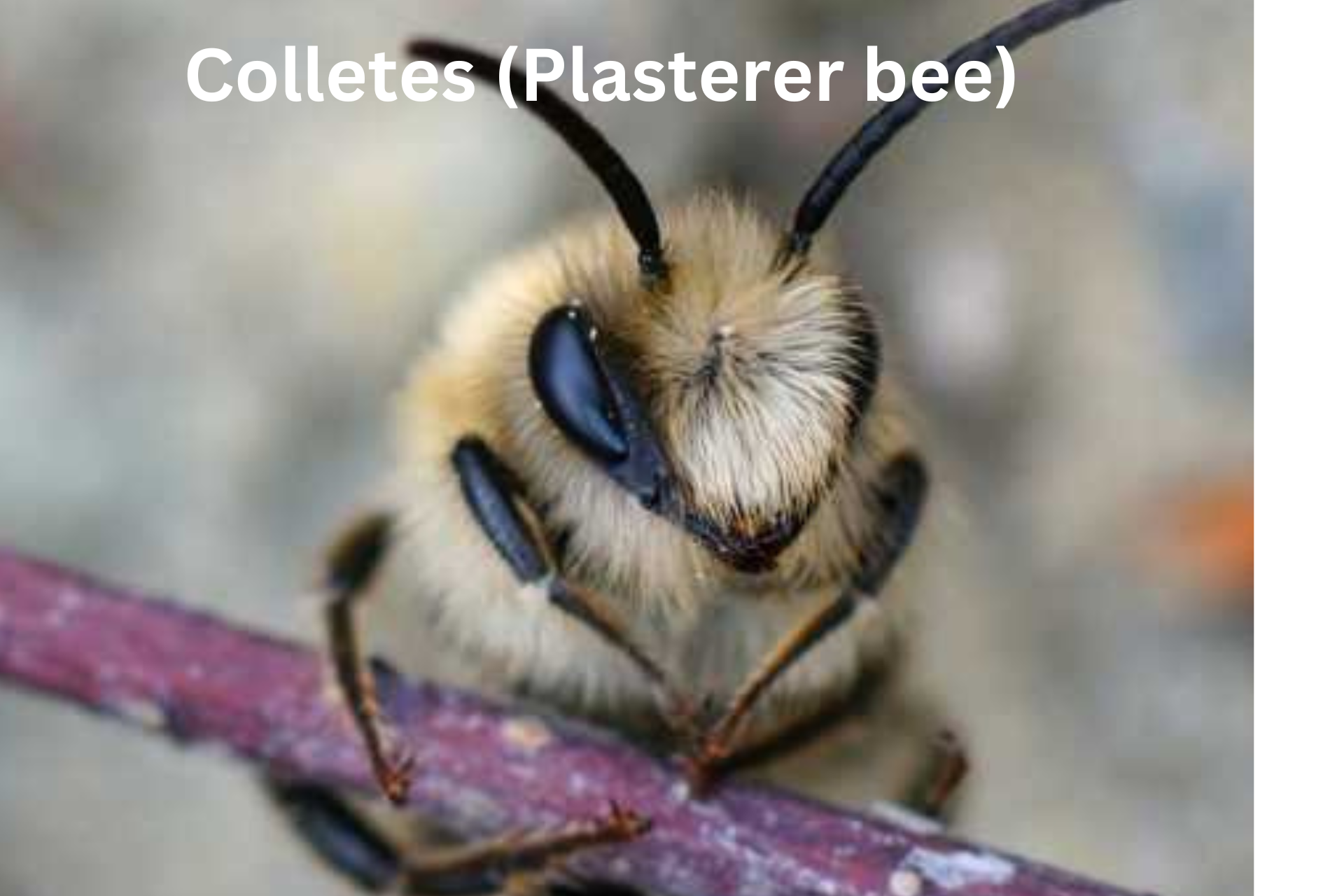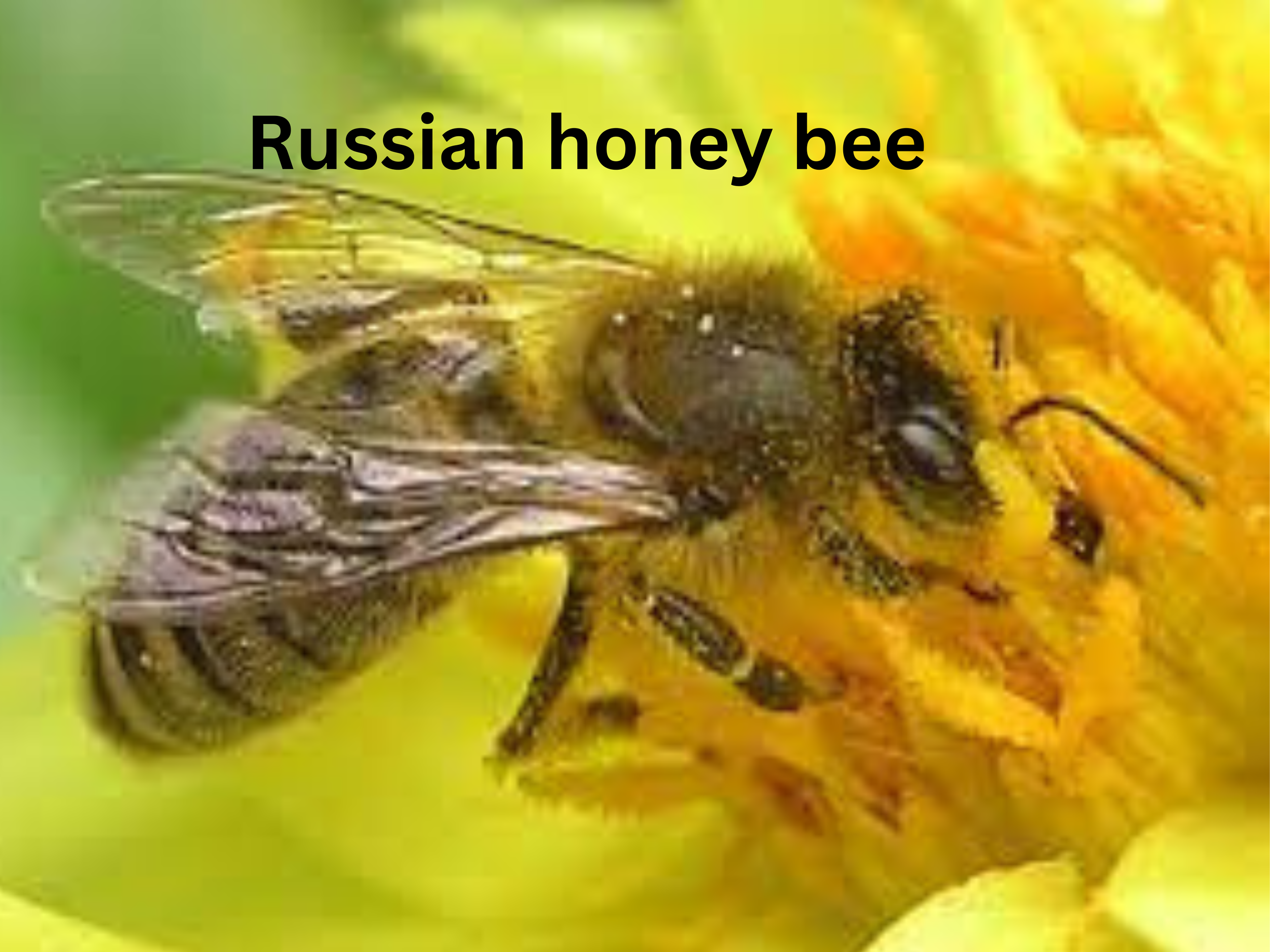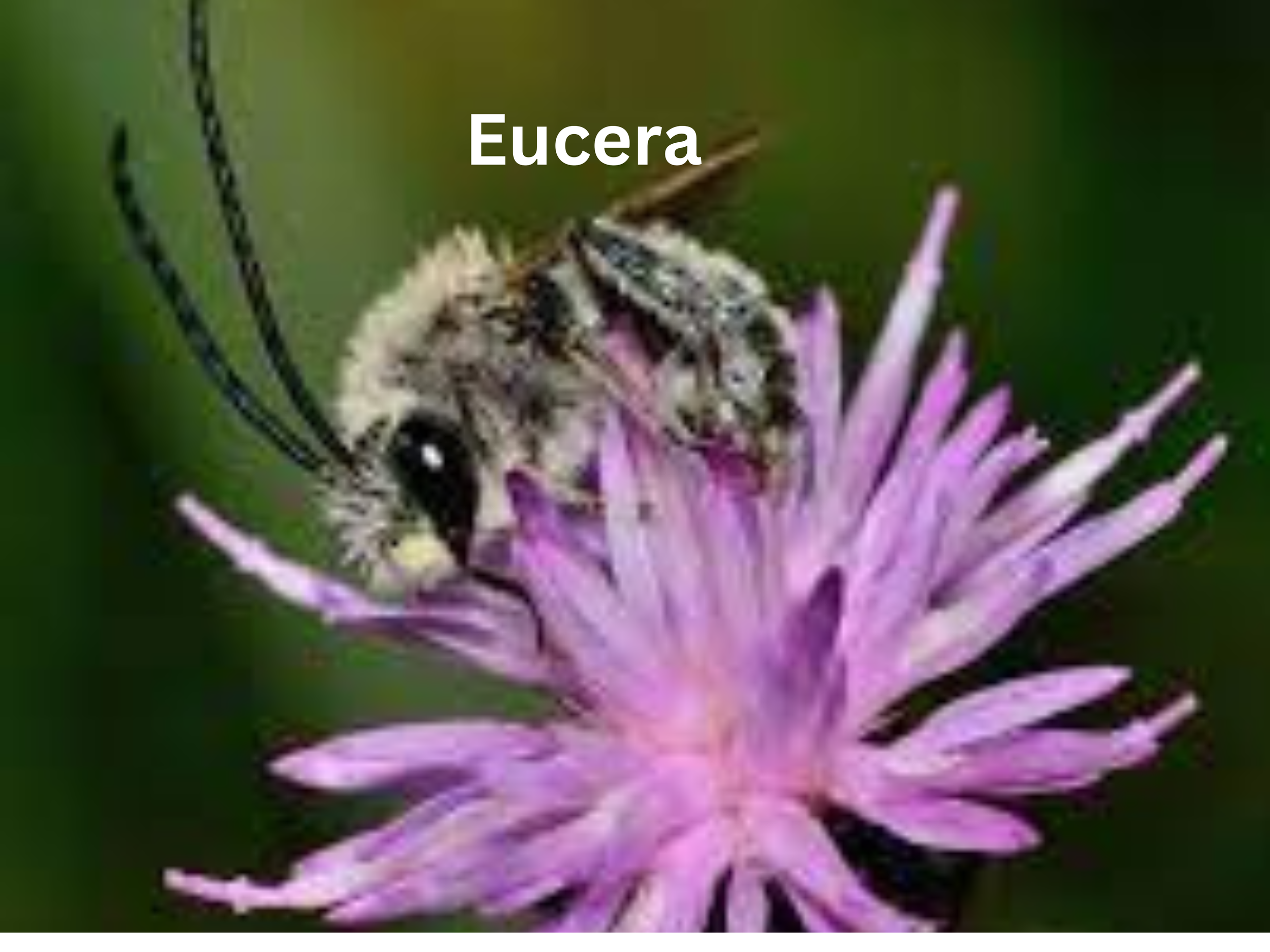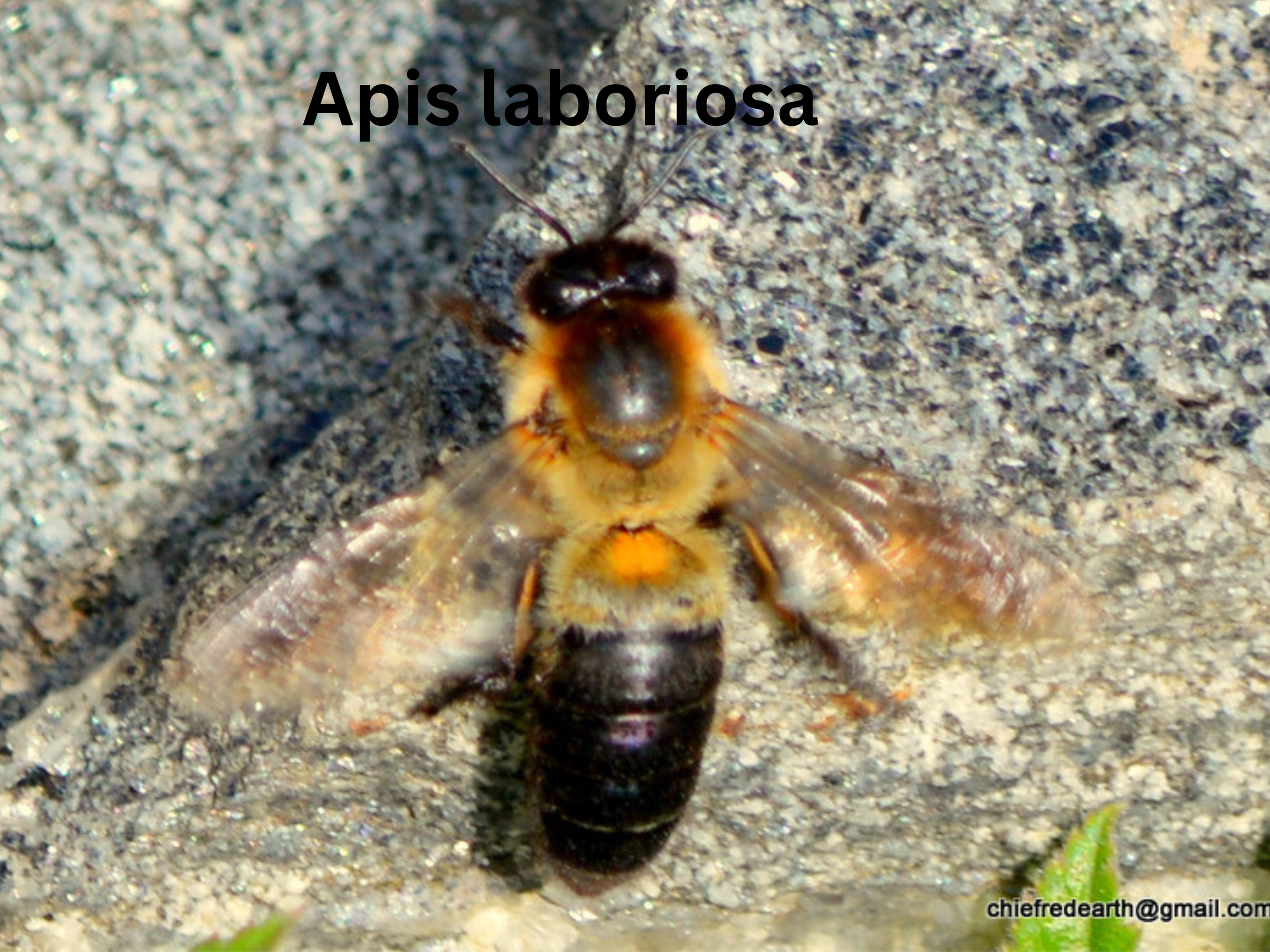Unveiling the Fascinating World of Different Bee Types.
Bees, with their perplexing social orders, differing species, and crucial biological parts, are among nature's most captivating tenants. From the bustling hives of nectar bees to the singular undertakings of mining bees, each species plays an interesting part in pollinating blooms, supporting environments, and improving human lives. All through history, bees have motivated wonder and ponder, their innovation and flexibility serving as a confirmation of the versatility of life on soil. In this investigation, we dive into the interesting world of bees, celebrating their differences, inventiveness, and significant effect on the normal world.
Honey bee
Honey bee: Imagine a bustling community where everybody has a part to play, from the dedicated people collecting nectar and dust to the ruler bee supervising the hive's issues. It's like a well-oiled machine, with each bee contributing to the more prominent great. And let's not disregard the delightful nectar they produce—the sweet compensates for their energetic endeavors.
Western honey bee
Western honey bee: Think of the Western nectar bee as a prepared traveler, having traveled far and wide to modern lands. Like a worldwide citizen, it adjusts to diverse situations and offers its fertilization services to communities around the world. And similar to a talented artisan, it fastidiously builds its honeycombs, making complex structures that serve as both a domestic and a treasure trove of brilliant nectar.
Bumblebee
Bumblebee: Imagine the bumblebee as your neighborly neighbor, buzzing around your plant with its fluffy body and delicate disposition. It's like a small community all on its own, with each bee working together to fertilize blooms and guarantee the cultivation of blossoms perfectly. In spite of their small size, bumblebees play a huge part in nature's embroidered artwork, providing color and energy to the world around us.
Apidae
Apidae: The Apidae family of bees is like a bustling neighborhood, with a differing cast of characters extending from the tireless nectar bees to the vivacious bumblebees and the single carpenter bees. Each bee brings its own interesting identity and abilities to the table, much like the individuals of a close-knit community. Together, they work to fertilize blooms and keep biological systems flourishing, reminding us of the significance of participation and differing qualities in nature.
Anthophora plumipes
Anthophora plumipes: Anthophora plumipes, also known as the hairy-footed blossom bee, could be a singular bee found over Europe and North Africa. These bees are known for their hairy appearance and can regularly be seen buzzing around gardens and knolls. They're critical pollinators, visiting a wide range of blossoms to gather dust and nectar. When it's time to settle, they burrow in sandy or loamy soils, making cozy homes for their descendants.
Tawny mining bee
Tawny mining bee: The brownish mining bee, or Andrena fulva, is another singular bee species found in Europe. These bees are specialists at uncovering burrows within the ground, where they lay their eggs and store nourishment. They're named for their tawny-orange coloration, which makes a difference in how they mix into their environment. Brownish mining bees are fundamental pollinators for numerous wildflowers and plant species, contributing to the excellence and biodiversity of their environments.
Carpenter bee
Carpenter bee: Carpenter bees, having a place in the Xylocopa, are known for their capacity to bore into wood to make homes. These bees are found around the world and are regularly seen buzzing around wooden structures or blossoms. In spite of their notoriety as bothers in a few cases, they're profitable pollinators for various plant species. Carpenter bees come in different sizes and colors, with males regularly being incapable of stinging and females doing so when incited.
Habropoda laboriosa
Habropoda laboriosa : Habropoda laboriosa, moreover known as the southeastern blueberry bee, could be a singular bee species local to the southeastern Joined together States. As their title recommends, they play a vital part in pollinating blueberry crops and other blossoming plants in their run. These bees are known for their effective buzz fertilization strategy, where they vibrate their bodies at a particular recurrence to discharge dust from blossoms with firmly fixed anthers. In spite of their little measure, southeastern blueberry bees are powerful supporters to rural efficiency and environment wellbeing.
Bombus pascuorum
Bombus pascuorum (common carder bee): The common carder bee, with its unmistakable ginger hide and dark midriff, may be a recognizable location in gardens, knolls, and parks. These constant laborers play a crucial role in pollinating a wide assortment of blooms as they dance from one sprout to another. They're like committed cultivators, guaranteeing the victory of our plants and the dynamic quality of our open-air spaces.
Bombus lapidarius
Bombus lapidarius (Red-tailed bumblebee): With its striking dark body and dynamic ruddy tail, the red-tailed bumblebee could be a genuine standout in any plant or stop setting. These bees are not only eye-catching but also fundamental pollinators, tirelessly going by flowers to gather nectar and dust. They're just like the colorful characters of the bee world, adding a touch of excellence and fervor to their environment.
Stingless bee
Stingless bee: In spite of their need for stings, stingless bees are important pollinators and nectar makers in tropical locales. Working together in social colonies, these bees play a significant part in pollinating a wide assortment of blossoms and contributing to the wellbeing of the biological system. They're like neighborly neighbors, discreetly going about their business and enhancing the common excellence of their environments.
Early bumblebee
Early bumblebee: As one of the primary bees to rise in spring, the early bumblebee could be a welcome sign of the changing seasons with its particular yellow stripes. These energetic specialists squander no time getting to work, pollinating early-flowering plants and kickstarting the development of our gardens. They're just like the energetic beavers of the bee world, proclaiming the entry of spring and guaranteeing the victory of early knickers.
Bombus hypnorum
Bombus hypnorum (tree bumblebee): The tree bumblebee, with its one-of-a-kind colors and versatility, has rapidly built itself up in gardens and forests, indeed in modern domains just like the UK. These bees are not as if they were pilgrims but too critical pollinators, spreading dust as they scavenge on blossoms. They're like gutsy pioneers, wandering into unused environments and contributing to the differing qualities of plant life.
Mining bee
Andrena (the mining bee): Mining bees, like those within the Andrena class, may work alone, but they're no less imperative within the terrific plot of fertilization. Settling within the ground, these single bees constantly fertilize a variety of plants, contributing to the wellbeing and differences of biological systems. They're just like the noiseless specialists, unobtrusively going about their trade and guaranteeing the continuation of plant species.
Apis cerana
Apis cerana (Eastern honey bee): The Eastern nectar bee, a recognizable location in Asia, isn't known for its nectar generation but, moreover, for its vital role in fertilization. These dedicated bees resolutely visit blooms, guaranteeing the effective propagation of plants and the wellbeing of ecosystems. They're just like the vigilant gatekeepers of the cultivate, perseveringly working to preserve adjustment and wealth in normal environments.
Bombus hortorum
Bombus hortorum (Garden Bumblebee): The plant bumblebee, with its long tongue impeccably suited for coming into bloom, could be a visit guest to gardens all over Europe. These eager pollinators play a crucial role in fertilizing blossoms and guaranteeing the production of natural products and seeds. They're just like the energetic plant devotees, bringing life and color to open-air spaces with their tireless fertilization endeavors.
Melipona
Melipona (Stingless bee): Melipona bees, in spite of their need for a sting, are just like the unsung heroes of the bee world, quietly going around their work within the Americas. As imperative pollinators and nectar makers, they contribute to the wellbeing and differences of ecosystems while also providing important assets for people. They're just like the artisans, making nectar and guaranteeing the victory of plant propagation.
Colletes
Colletes (Plasterer bee): Plasterer bees, also known as Colletes, may lead singular lives, but they're no less imperative in pollinating blooms and contributing to biodiversity. These dedicated bees tirelessly collect dust and nectar, playing an imperative role in biological system wellbeing and plant generation. They're just like the unsung heroes of the bee world, discreetly satisfying their environmental part and enhancing their territories with their fertilization exercises.
Tetragonula carbonaria
Tetragonula carbonaria (sugarbag bee): Plasterer bees, also known as Colletes, may lead singular lives, but they're no less imperative in pollinating blooms and contributing to biodiversity. These dedicated bees tirelessly collect dust and nectar, playing an imperative role in biological system wellbeing and plant generation. They're just like the unsung heroes of the bee world, discreetly satisfying their environmental part and enhancing their territories with their fertilization exercises.
Common eastern bumblebee
Common eastern bumblebee: The common eastern bumblebee could be a constant laborer, energetically going to blossoms in gardens and glades over the eastern part of the United States and Canada. Recognizable by its unmistakable dark and yellow stripes, this bee species plays a vital part in pollinating a wide assortment of plants, from wildflowers to rural crops. With its fuzzy body adjusted for dust collection and long tongue for getting to nectar, the common eastern bumblebee represents proficiency and viability in its pollination endeavors. These bees are just like the committed commuters of the creepy crawly world, guaranteeing that botanical assets are proficiently utilized and biological systems stay dynamic.
Xylocopa violacea
Xylocopa violacea (Violet carpenter bee): The violet carpenter bee could be an ace expert in the bee world, showing momentous carpentry aptitudes because it carves its way into wooden structures. With its gleaming dark body and gleaming wings, it's not only a pleasant sight to see but also an imperative pollinator of blossoming plants. In spite of its single nature, the violet carpenter bee contributes to biological system wellbeing by pollinating an assortment of plant species, from wildflowers to natural product trees. These bees are like artisans, utilizing their natural capacities to shape their environment and guarantee the continuation of their species.
Nomada
Nomada: Wanderer bees, a portion of the Nomada class, have developed a special way of life as social parasites, depending on other bee species for nourishment and protection. In spite of being seen as freeloaders, they play a significant role in fertilization and keeping up biological system adjustments. By parasitizing the homes of other bees, Nomada bees, in a roundabout way, contribute to fertilization while also serving as markers of living space quality and biodiversity. These bees are just like vital entrepreneurs, adjusting to their environment and finding inventive ways to outlive and flourish.
Anthophora
Anthophora: Anthophora bees are characterized by their particular pollen-collecting behavior, where they utilize their rear legs to assemble dust from blooms. With their persevering scrounging endeavors, they guarantee the generation of blooming plants by exchanging dust from one bloom to another. In spite of their single way of life, Anthophora bees are the basic pollinators of a wide range of plant species, including wildflowers and rural crops. These bees are like fastidious specialists, tirelessly performing their part within the fertilization process and contributing to the differing qualities of plant life.
Buff-tailed bumblebee
Buff-tailed bumblebee: The buff-tailed bumblebee could be a commonplace guest in gardens and glades in Europe and Asia, recognized by its buff-colored tail. With its strong construct and effective scavenging behavior, this bee species plays an imperative part in pollinating a differing cluster of blossoming plants. From early spring sprouts to late-season blossoms, the buff-tailed bumblebee perseveringly collects nectar and dust, guaranteeing the propagation of plant species and the supportability of biological systems. These bees are like flexible pollinators, adjusting to changing botanical assets and contributing to the flexibility of environments.
East African lowland honey bee
East African lowland honey bee: The East African swamp nectar bee may be a dedicated part of the bee community, buzzing over the fields of Africa in search of botanical assets. With its tireless scavenging endeavors, this bee species plays an imperative part in pollinating local plants and contributing to environmental wellbeing. In addition to its fertilization services, the East African swamp nectar bee is additionally an important nectar maker, providing an imperative nourishment source for both people and natural life. These bees are like innovative ranchers, perseveringly tending to their hives and guaranteeing the continuation of their species.
Italian bee
Italian bee: The Italian bee is famous for its delicate personality and tall nectar generation, making it a favorite among beekeepers around the world. With its capacity to preserve concordance inside the hive, this bee species embodies participation and social cohesion. In addition to its nectar generation capabilities, the Italian bee plays a significant role in pollinating an assortment of blooming plants, contributing to environmental solidity and biodiversity. These bees are just like the peacekeepers of the hive, cultivating a sense of solidarity and reason among colony individuals while guaranteeing the victory of their species.
Bombus polaris
Bombus polaris (arctic bumblebee): The ice bumblebee could be a versatile occupant of the distant north, braving cruel cold conditions to fertilize blossoming plants. With its thick hide and capacity to resist extraordinary cold, this bee species embodies flexibility and continuance. In spite of the challenges posed by its frigid environment, the cold bumblebee plays a pivotal role in pollinating ice greenery and contributing to biological system solidity. These bees are like courageous pioneers, wandering into inaccessible domains to fulfill their environmental part and guarantee the survival of their species.
Colletidae
Colletidae (Plasterer bee): Plasterer bees, belonging to the Colletidae family, are single bees known for their interesting settling propensities and fastidious development abilities. With their capacity to emit waterproof substances, they make solid homes that provide security for their descendants. In spite of their single way of life, plasterer bees play an imperative part in pollinating blooming plants and contributing to the wellbeing of the biological system. These bees are like gifted planners, forming their environment and guaranteeing the continuation of their species through their settling behaviors.
European dark bee
European dark bee: The European dim bee epitomizes flexibility and versatility, having advanced over centuries to flourish in differing European scenes. Known for its dim coloration and strong nature, this bee species has created a solid resistance to pests and illnesses prevalent in its local living spaces. In spite of confronting challenges from present-day agrarian hones and living space misfortune, the European dim bee proceeds to play an imperative part in pollinating wildflowers and crops over Europe, making it an image of preservation and legacy.
Apis dorsata
Apis dorsata (the giant honey bee): The mammoth nectar bee, with its forcing estimate and communal way of life, embodies quality in solidarity. Found within the woodlands of Asia, these bees construct enormous, hanging homes that can house thousands of people. They illustrate exceptional cooperation and coordination, working together to scavenge for nectar and dust and protect their settlement from predators. In spite of their size, they're dexterous flyers capable of exploring thick foliage in the form of flower assets, making them basic pollinators in their local biological systems.
Carniolan honey bee
Carniolan honey bee: The Carniolan nectar bee is eminent for its delicate disposition and productive scrounging behavior. Starting from the precipitous locales of Central Europe, these bees display solid colony cohesion and versatility in fluctuating natural conditions. They're known for their fast-spring buildup and resistance to pests and illnesses, making them well known among beekeepers around the world. With their calm mien and tall efficiency, Carniolan nectar bees are esteemed for their commitments to nectar generation and fertilization.
American bumblebee
American bumblebee: The American bumblebee epitomizes the soul of investigation and flexibility, crossing assorted territories in North America. With its unmistakable dark and yellow stripes and hairy appearance, this species could be commonly located in gardens, glades, and agrarian scenes. American bumblebees play a significant role in pollinating a wide assortment of local wildflowers and crops, contributing to biological system steadiness and nourishment security. In spite of confronting dangers from territory misfortune and pesticide presentation, these bees proceed to flourish, adjusting to changing scenes and fashioning unused ways in their journey for nectar and dust.
Eastern Carpenter Bee
Eastern Carpenter Bee: The Eastern Carpenter Bee is just like the gifted artisan of the bee world, illustrating surprising carpentry capacities and exactness in settlement development. Found in forests and urban situations across eastern North America, these single bees carve tunnels into dead wood to form their homes, showing fastidious attention to detail. Whereas they may in some cases be seen as bothers due to their settling propensities, Eastern Carpenter bees play a vital role in pollinating local plants and contributing to biological system wellbeing.
Buckfast bee
Buckfast bee: The Buckfast bee encapsulates flexibility and versatility, having been specifically bred for its illness resistance and nectar generation capabilities. Created by Brother Adam at Buckfast Nunnery in Britain, this cross-breed bee shows a one-of-a kind mix of characteristics from different European subspecies. Buckfast bees are recognized for their delicate nature, fast spring population development, and capacity to flourish in different climates. Beekeepers are inclined toward them for their proficiency and sensibility, making them a well-known alternative for both nectar generation and fertilization.
Apis florea
Apis florea (Dwarf Honey Bee): The predominate nectar bee, in spite of its small size, plays a noteworthy role in pollinating crops and wildflowers in its local living spaces throughout Southeast Asia. These bees develop perplexing, uncovered homes in trees and bushes, illustrating momentous genius and versatility. With their quick scavenging flights and effective dust collection methods, overshadow honeybees contribute to environmental solidity and agrarian efficiency in tropical districts.
Russian honey bee
Russian honey bee: Russian nectar bees are renowned for their strength and flexibility in unforgiving natural conditions, making them well-suited for beekeeping in colder climates. Starting from the Primorsky locale of Russia, these bees show solid resistance to Varroa bugs and tracheal vermin, common bothers that torment other nectar bee populations. Beekeepers profoundly esteem Russian nectar bees for their strength amid winter, fast spring populace development, and capacity to deliver nectar, making them an ideal choice for feasible beekeeping operations.
Apinae
Apinae: Russian nectar bees are eminent for their quality and adaptability in unforgiving common conditions, making them well-suited for beekeeping in colder climates. Beginning in the Primorsky district of Russia, these bees appear to have strong resistance to Varroa bugs and tracheal vermin, common bothers that torment other nectar bee populations. Beekeepers appreciate Russian nectar bees for their winter strength, quick spring populace extension, and nectar-producing capacities, situating them as a great alternative for maintainable beekeeping hives.
Ceratina
Ceratina (small carpenter bee): Ceratina, or little carpenter bees, are just like the planners of the bee world, carving modest burrows into plant stems and wooden structures to form their homes. In spite of their little estimate, these single bees display surprising quality and exactness in their settlement development. With their productive scrounging behavior and fertilization administration, Ceratina bees contribute to the propagation of local plants and the support of biological system wellbeing in different living spaces around the world.
Anthophorini
Anthophorini: a tribe within the family Apidae, comprises an assorted bunch of singular bees known for their particular settling propensities and flower inclinations. From ground-nesting species to those that settle in empty plant stems or shake clefts, Anthophorini bees display momentous, differing qualities in settling behavior and territory inclinations. These bees play critical roles in pollinating wildflowers and crops and serve as markers of living space quality and biodiversity in earthbound environments around the world.
Caucasian honey bee
Caucasian honey bee: The Caucasian nectar bee, starting from the Caucasus locale of Eastern Europe, is prized for its tenderness, efficiency, and winter solidity. These bees display solid resistance to varroa bugs and tracheal bugs, common pests that torment other nectar bee populations. Beekeepers favor Caucasian nectar bees for their tender deportment and quick spring population development, increasing in value their capacity for nectar generation and versatility to different natural conditions.
Habropoda
Habropoda: Habropoda bees, commonly known as squash bees, are just like the pros of the bee world, specializing in the fertilization of squash, pumpkin, and related crops. These singular bees display one-of-a kind behaviors, such as collecting dust exclusively from the blossoms of cucurbit plants and settling within the soil close to their favorite plants. With their productive fertilization services and dependence on particular plant species, Habropoda bees play a vital role in the generation of cucurbit crops and the upkeep of agrarian efficiency.
Eucera
Eucera: Eucera bees, also known as long-horned bees, are just like the craftsmen of the bee world, with their particular long radio wires and complex flower inclinations. These singular bees display surprising differing qualities in settling propensities and scrounging behavior, with a few species specializing in collecting dust from particular plant families. With their proficient fertilization administrations and their role as cornerstone species in different biological systems, Eucera bees contribute to the propagation of local plants and the upkeep of flower differences in earthly living spaces around the world.
Apis and reniformis
Apis and reniformis (black dwarf honey bee): The dark-overshadowed nectar bee, local to Southeast Asia, is just like the stealthy pilot of the bee world, exploring thick woodlands and tropical scenes in search of flower assets. These bees display momentous dexterity and cleverness, foraging for nectar and dust within the canopy of trees and bushes. With their effective fertilization administrations and capacity to flourish in differing environments, dark predominate nectar bees play a significant role in supporting tropical environments and biodiversity in their local range.
Apis laboriosa
Apis laboriosa (the giant Himalayan honey bee): The monster Himalayan nectar bee is just like the mountain dweller of the bee world, flourishing within the high-altitude scenes of the Himalayas and Tibetan Level. These bees show exceptional adjustments to cold temperatures and moo oxygen levels, permitting them to outlive in cruel, elevated situations. With their productive scavenging behavior and role as cornerstone species in snow-capped environments, monster Himalayan nectar bees contribute to the propagation of high-altitude greenery and the upkeep of biodiversity in hilly locales.
Apis cerana japonica
Apis cerana japonica (Japanese honey bee): The Japanese nectar bee is just like the social symbol of the bee world, venerated for its part in conventional beekeeping hones and social legacy in Japan. These bees show momentous adjustments to mild climates and scavenging behavior, flourishing in assorted scenes across Japan. With their effective fertilization administrations and significance in Japanese fables and mythology, Japanese nectar bees play a significant part in maintaining environments and social conventions in their local run.
In conclusion, bees are not simply creepy crawlies; they are vital stewards of the environment, fundamental to the wellbeing and imperativeness of environments around the world. From the complexities of their social structures to the accuracy of their fertilization methods, bees represent the excellence and complexity of the characteristic world. As we wonder at their resourcefulness and versatility, let us also recognize our duty to ensure and protect these priceless pollinators. By shielding their living spaces, lessening pesticide use, and advancing feasible beekeeping hives, we are able to guarantee a future where bees proceed to flourish, improving our lives and maintaining the sensitive adjust of nature.
Types of Bees













































